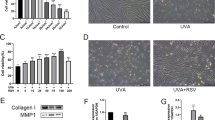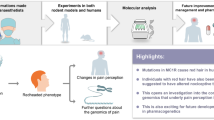Abstract
Current strategies to enhance regeneration of peripheral neurons involve broad activation of sensory, autonomic, and motor axons. Peripheral neuron regeneration is limited in persons with damage or disease of peripheral axons. Here, we provide evidence that subtoxic activation of TRPV1 channels in sensory neurons is associated with activation of growth and subtle changes in skin reinnervation. We identify a bidirectional, dose-related impact of capsaicin, a TRPV1 agonist, on sensory neurons and their axons with rises in their outgrowth plasticity at low doses and toxic neurodegeneration at high doses. Moreover, its impact on growth added to that of preconditioning. Neither outcome was observed in TRPV1 null neurons. We confirmed that low dose activation was associated with rises in neuronal calcium, as well as rises in TRPV1 mRNA transcripts. In mice with a sciatic nerve crush followed by a single application of capsaicin directly to the injury site, there was no impact on motor or myelinated axon recovery but there was evidence of better recovery of thermal sensation toward baseline with hyperalgesia. Moreover, skin reinnervation by epidermal axons approached contralateral levels. TRPV1 null mice displayed loss of thermal sensation during later recovery. In sensory axons innervating the pinna of the ear, local capsaicin rendered early axon loss followed by later hyperinnervation. Taken together, TRPV1 activation alters the regenerative behavior of adult neurons and their axons both in vitro and during epidermal reinnervation in vivo. The findings identify a selective manipulation that augments cutaneous innervation by thermosensitive axons.








Similar content being viewed by others
References
Woo V, Cheng C, Duraikannu A, Chandrasekhar A, Purdy K, Martinez JA, Zochodne DW (2018) Caspase-6 is a dispensable enabler of adult mammalian axonal degeneration. Neuroscience 371:242–253
Wang S, Wang S, Asgar J, Joseph J, Ro JY, Wei F, Campbell JN, Chung MK (2017) Ca(2+) and calpain mediate capsaicin-induced ablation of axonal terminals expressing transient receptor potential vanilloid 1. J Biol Chem 292:8291–8303
Goswami C, Schmidt H, Hucho F (2007) TRPV1 at nerve endings regulates growth cone morphology and movement through cytoskeleton reorganization. FEBS J 274:760–772
Polydefkis M, Hauer P, Sheth S, Sirdofsky M, Griffin JW, McArthur JC (2004) The time course of epidermal nerve fibre regeneration: studies in normal controls and in people with diabetes, with and without neuropathy. Brain 127:1606–1615
Singh B, Krishnan A, Micu I, Koshy K, Singh V, Martinez JA, Koshy D, Xu F et al (2015) Peripheral neuron plasticity is enhanced by brief electrical stimulation and overrides attenuated regrowth in experimental diabetes. Neurobiol Dis 83:134–151
Cohan CS, Connor JA, Kater SB (1987) Electrically and chemically mediated increases in intracellular calcium in neuronal growth cones. J Neurosci 7:3588–3599
Kater SB, Mills LR (1991) Regulation of growth cone behavior by calcium. J Neurosci 11:891–899
Kocsis JD, Rand MN, Lankford KL, Waxman SG (1994) Intracellular calcium mobilization and neurite outgrowth in mammalian neurons. J Neurobiol 25:252–264
Gomez TM, Zheng JQ (2006) The molecular basis for calcium-dependent axon pathfinding. Nat Rev Neurosci 7:115–125
Frey E, Karney-Grobe S, Krolak T, Milbrandt J, DiAntonio A (2018) TRPV1 agonist, capsaicin, induces axon outgrowth after injury via Ca(2+)/PKA signaling. eNeuro 5(3)
Krishnan A, Purdy K, Chandrasekhar A, Martinez J, Cheng C, Zochodne DW (2017) A BRCA1-dependent DNA damage response in the regenerating adult peripheral nerve milieu. Mol Neurobiol 55:4051–4067
Ying Z, Zhai R, McLean NA, Johnston JM, Misra V, Verge VMK (2015) The unfolded protein response and cholesterol biosynthesis link Luman/CREB3 to regenerative axon growth in sensory neurons. J Neurosc 35:14557–14570
Ying Z, Misra V, Verge VM (2014) Sensing nerve injury at the axonal ER: activated Luman/CREB3 serves as a novel axonally synthesized retrograde regeneration signal. Proc Natl Acad Sci U S A 111:16142–16147
Christie KJ, Webber CA, Martinez JA, Singh B, Zochodne DW (2010) PTEN inhibition to facilitate intrinsic regenerative outgrowth of adult peripheral axons. J Neurosci 30:9306–9315
Webber CA, Salame J, Luu GL, Acharjee S, Ruangkittisakul A, Martinez JA, Jalali H, Watts R et al (2013) Nerve growth factor acts through the TrkA receptor to protect sensory neurons from the damaging effects of the HIV-1 viral protein, Vpr. Neuroscience 252:512–525
Kan M, Guo G, Singh B, Singh V, Zochodne DW (2012) Glucagon-like peptide 1, insulin, sensory neurons, and diabetic neuropathy. J Neuropathol Exp Neurol 71:494–510
Lauria G, Cornblath DR, Johansson O, McArthur JC, Mellgren SI, Nolano M, Rosenberg N, Sommer C (2005) EFNS guidelines on the use of skin biopsy in the diagnosis of peripheral neuropathy. Eur J Neurol 12:747–758
Cheng C, Guo GF, Martinez JA, Singh V, Zochodne DW (2010) Dynamic plasticity of axons within a cutaneous milieu. J Neurosci 30:13735–13744
Hargreaves K, Dubner R, Brown F, Flores C, Joris J (1988) A new and sensitive method for measuring thermal nociception in cutaneous hyperalgesia. Pain 32:77–88
Cobianchi S, de Cruz J, Navarro X (2014) Assessment of sensory thresholds and nociceptive fiber growth after sciatic nerve injury reveals the differential contribution of collateral reinnervation and nerve regeneration to neuropathic pain. Exp Neurol 255:1–11
Cheng C, Guo GF, Martinez JA, Singh V, Zochodne DW (2010a) Dynamic plasticity of axons within a cutaneous milieu. J Neurosci 30:14735–14744
Guo G, Kan M, Martinez JA, Zochodne DW (2011) Local insulin and the rapid regrowth of diabetic epidermal axons. Neurobiol Dis 43:414–421
Kobayashi K, Fukuoka T, Obata K, Yamanaka H, Dai Y, Tokunaga A, Noguchi K (2005) Distinct expression of TRPM8, TRPA1, and TRPV1 mRNAs in rat primary afferent neurons with adelta/c-fibers and colocalization with trk receptors. J Comp Neurol 493:596–606
Hwang SJ, Oh JM, Valtschanoff JG (2005) Expression of the vanilloid receptor TRPV1 in rat dorsal root ganglion neurons supports different roles of the receptor in visceral and cutaneous afferents. Brain Res 1047:261–266
Elitt CM, McIlwrath SL, Lawson JJ, Malin SA, Molliver DC, Cornuet PK, Koerber HR, Davis BM et al (2006) Artemin overexpression in skin enhances expression of TRPV1 and TRPA1 in cutaneous sensory neurons and leads to behavioral sensitivity to heat and cold. J Neurosci 26:8578–8587
Hirth M, Rukwied R, Gromann A, Turnquist B, Weinkauf B, Francke K, Albrecht P, Rice F et al (2013) Nerve growth factor induces sensitization of nociceptors without evidence for increased intraepidermal nerve fiber density. Pain 154:2500–2511
Senger JB, Verge VMK, Chan KM, Webber CA (2018) The nerve conditioning lesion: a strategy to enhance nerve regeneration. Ann Neurol 83:691–702
Christie KJ, Krishnan A, Martinez JA, Purdy K, Singh B, Eaton S, Zochodne D (2014) Enhancing adult nerve regeneration through the knockdown of retinoblastoma protein. Nat Commun 5:3670
Geremia NM, Gordon T, Brushart TM, Al-Majed AA, Verge VM (2007) Electrical stimulation promotes sensory neuron regeneration and growth-associated gene expression. Exp Neurol 205:347–359
Brushart TM, Jari R, Verge V, Rohde C, Gordon T (2005) Electrical stimulation restores the specificity of sensory axon regeneration. Exp Neurol 194:221–229
McLean NA, Popescu BF, Gordon T, Zochodne DW, Verge VM (2014) Delayed nerve stimulation promotes axon-protective neurofilament phosphorylation, accelerates immune cell clearance and enhances remyelination in vivo in focally demyelinated nerves. PLoS One 9:e110174
Singh B, Xu QG, Franz CK, Zhang R, Dalton C, Gordon T, Verge VM, Midha R et al (2012) Accelerated axon outgrowth, guidance, and target reinnervation across nerve transection gaps following a brief electrical stimulation paradigm. J Neurosurg 116:498–512
Al-Majed AA, Neumann CM, Brushart TM, Gordon T (2000) Brief electrical stimulation promotes the speed and accuracy of motor axonal regeneration. J Neurosci 20:2602–2608
Gordon T, Amirjani N, Edwards DC, Chan KM (2010) Brief post-surgical electrical stimulation accelerates axon regeneration and muscle reinnervation without affecting the functional measures in carpal tunnel syndrome patients. Exp Neurol 223:192–202
Brenneis C, Kistner K, Puopolo M, Segal D, Roberson D, Sisignano M, Labocha S, Ferreiros N et al (2013) Phenotyping the function of TRPV1-expressing sensory neurons by targeted axonal silencing. J Neurosci 33:315–326
Navarro X (2016) Functional evaluation of peripheral nerve regeneration and target reinnervation in animal models: a critical overview. Eur J Neurosci 43:271–286
Acknowledgements
Dr. Matt Larouche and Twinkle Joy provided valuable technical assistance.
Funding
The work was supported by an operating grant from the Canadian Institutes of Health Research (362082), by the Faculty of Medicine, Department of Medicine, Division of Neurology, University of Alberta, and by the University Hospital Foundation.
Author information
Authors and Affiliations
Corresponding author
Ethics declarations
The protocols were reviewed and approved by the Animal Care Committee University of Alberta, adhering to guidelines of the Canadian Council of Animal Care.
Additional information
Publisher’s Note
Springer Nature remains neutral with regard to jurisdictional claims in published maps and institutional affiliations.
T. Poitras and A. Chandrasekhar are co-first author.
Rights and permissions
About this article
Cite this article
Poitras, T., Chandrasekhar, A., McCoy, L. et al. Selective Sensory Axon Reinnervation and TRPV1 Activation. Mol Neurobiol 56, 7144–7158 (2019). https://doi.org/10.1007/s12035-019-1574-6
Received:
Accepted:
Published:
Issue Date:
DOI: https://doi.org/10.1007/s12035-019-1574-6




